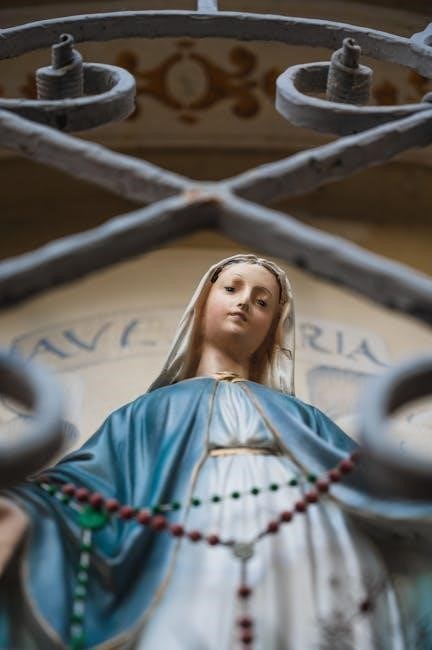The Virgin Suicides by Jeffrey Eugenides is a haunting exploration of teenage alienation and tragedy, now widely available in digital formats like PDF for modern readers.
Overview of the Novel and Its Significance
The Virgin Suicides by Jeffrey Eugenides is a haunting tale of family tragedy, teenage alienation, and the mysteries of human behavior. The novel explores the lives of the Lisbon sisters, whose deaths captivate and disturb their suburban community. Through lyrical prose and a non-linear narrative, Eugenides examines themes of isolation, mental health, and the complexities of adolescence. Published in 1993, the book gained critical acclaim for its unique storytelling and profound emotional depth, solidifying its place in contemporary literature.
The Author: Jeffrey Eugenides
Jeffrey Eugenides is a Pulitzer Prize-winning American author, best known for his novels that explore themes of identity, family, and human complexity. Born in 1960 in Detroit, Michigan, Eugenides draws heavily from his Greek heritage and Midwestern upbringing in his writing. His debut novel, The Virgin Suicides (1993), catapulted him to fame, while Middlesex (2002) earned him the Pulitzer Prize. His work is celebrated for its lyrical prose and deep psychological insight.
The Book’s Reception and Popularity
The Virgin Suicides received widespread critical acclaim upon its release in 1993, praised for its haunting narrative and exploration of adolescent angst. The novel became a bestseller, resonating with readers for its poignant portrayal of family tragedy and teenage alienation. Its popularity endured, leading to a cult following and adaptation into a film. The availability of The Virgin Suicides PDF has further expanded its reach, making it accessible to modern readers who appreciate its timeless themes and lyrical prose.

Plot Summary of “The Virgin Suicides”
The Virgin Suicides by Jeffrey Eugenides tells the haunting tale of the Lisbon sisters, whose tragic suicides captivate their suburban Detroit community in the 1970s.
Setting: Suburban Detroit in the 1970s
The story unfolds in an idyllic yet stifling suburban Detroit neighborhood during the 1970s, a time of social change and repression. The setting reflects the era’s conformity and isolation, with the Lisbon family standing out as enigmatic figures. The suburban environment, marked by homogeneity and quiet desperation, contrasts sharply with the Lisbon sisters’ mysterious world. This backdrop of middle-class America in the 1970s amplifies the novel’s themes of alienation and the suffocating nature of societal expectations.
The Lisbon Sisters: Characters and Dynamics
The Lisbon sisters—Cecilia, Lux, Bonnie, Mary, and Therese—are the enigmatic core of the novel. Each sister embodies unique traits: Cecilia’s quiet intensity, Lux’s rebellious allure, Bonnie’s introspection, Mary’s practicality, and Therese’s reserve. Their isolation fosters a tight-knit yet suffocating bond, as they navigate adolescence under oppressive parental control. Their individual struggles and shared fate captivate the neighborhood boys, who obsess over their mystery. The sisters’ dynamics reveal both their unity and their tragic disconnection from the world outside their home.
The Tragic Events and Suicides
The novel unfolds with the sequential suicides of the Lisbon sisters, each event more shocking than the last. Cecilia’s death initiates the tragedy, followed by her sisters in a heartbreaking chain reaction. The suicides remain shrouded in mystery, leaving the family and neighborhood boys in despair. The events are both devastating and fascinating, as the sisters’ struggles with isolation and despair culminate in their ultimate escape. Their deaths leave behind unanswered questions, haunting the community and forever altering their world.
Themes Explored in “The Virgin Suicides”
The novel delves into teenage alienation, the suffocating effects of overprotective parenting, and the enigmatic nature of suicide, exploring themes of isolation, despair, and societal expectations.
Teenage Alienation and Isolation
The Lisbon sisters embody the devastating consequences of teenage alienation, trapped in a suffocating home life and societal expectations. Their isolation is both external and internal, as they struggle to connect with peers and grapple with their own identities. The novel poignantly captures the disconnection of adolescence, where even small acts of rebellion or self-expression are stifled. This theme resonates deeply, as the sisters’ inability to escape their circumstances mirrors the universal teenage struggle for autonomy and understanding, ultimately leading to tragic consequences.
The Impact of Overprotective Parenting
Mr. and Mrs. Lisbon’s rigid, overprotective parenting exacerbates their daughters’ isolation, fostering a suffocating environment that stifles individuality. Their strict rules and inability to understand their children’s needs create emotional distance, leaving the sisters feeling trapped. This oppressive dynamic highlights the dangers of shielding teenagers from the world, as it prevents them from developing coping mechanisms and independence. The Lisbon parents’ well-intentioned but misguided approach ultimately contributes to the tragic unraveling of their family, underscoring the novel’s critique of excessive parental control.
The Mystery of Suicide and Its Aftermath
The novel masterfully explores the enigmatic nature of suicide, leaving the Lisbon sisters’ deaths shrouded in mystery. Their tragic fate captivates and devastates the neighborhood boys, who struggle to comprehend the underlying reasons. The aftermath reveals a community grappling with unanswered questions, as the girls’ suicides become a haunting, unexplainable event. The narrative emphasizes the incomprehensibility of such acts, leaving readers with a lingering sense of sorrow and intrigue. The suicides’ impact resonates deeply, shaping the emotional landscape of the story.

Key Characters in “The Virgin Suicides”
The Lisbon sisters—Cecilia, Lux, Bonnie, Mary, and Therese—are central to the story. The neighborhood boys narrate their fascination, while Mr. and Mrs. Lisbon’s parenting shapes their fate.
The Lisbon Sisters: Cecilia, Lux, Bonnie, Mary, and Therese
The Lisbon sisters are the enigmatic and tragic core of the novel. Cecilia, the youngest, is a poignant figure whose early death sets the tone for the story. Lux, the most rebellious, embodies teenage defiance, while Bonnie and Mary represent quieter struggles. Therese, the eldest, symbolizes the tension between conformity and individuality. Their unique personalities and collective fate captivate the narrators, who obsess over their lives and deaths.
Their individuality and shared isolation make them both relatable and mysterious, leaving a lasting impact on the narrative.
The Narrators: The Neighborhood Boys
The neighborhood boys serve as the collective narrators of the story, offering a unique, outsider perspective on the Lisbon sisters. Their fascination drives the narrative, as they gather stories, rumors, and observations about the mysterious family. Through their shared accounts, they attempt to piece together the truth behind the sisters’ tragic fate. This collective narration creates a sense of voyeurism and intrigue, drawing readers into the enigma of the Lisbon family.
Mr. and Mrs. Lisbon: The Parents’ Role
Mr. and Mrs. Lisbon are portrayed as rigid, overprotective parents whose strict control over their daughters’ lives exacerbates the family’s isolation. Their authoritarian approach, combined with a lack of understanding, contributes to the sisters’ suffocating environment. The parents’ inability to connect with their children creates tension, highlighting the consequences of oppressive parenting. Their roles are pivotal in shaping the tragic events, as their actions unintentionally push the sisters toward despair and ultimately, the devastating outcome that captivates the neighborhood’s attention.

Symbolism and Metaphors in the Novel
The novel richly employs symbolism, with elements like the treehouse, seasonal shifts, and Cecilia’s diary serving as metaphors for longing, decay, and hidden truths.
The Tree House as a Symbol of Longing
The tree house in The Virgin Suicides symbolizes the Lisbon sisters’ longing for freedom and escape from their suffocating home life. It serves as a refuge, a place where they can momentarily forget their troubles and connect with the outside world. The tree house represents the sisters’ desire for autonomy and normalcy, which is repeatedly thwarted by their overprotective parents. Its presence also underscores the contrast between the idyllic suburban setting and the tragic events unfolding within the Lisbon household, highlighting the sisters’ unattainable yearning for liberation.
The Use of Nature and Seasonal Changes
Nature and seasonal changes in The Virgin Suicides mirror the emotional landscape of the Lisbon sisters. The vibrant blooms of spring and summer contrast with the oppressive heat and decay of autumn, reflecting the sisters’ growing isolation. Winter’s starkness symbolizes their complete withdrawal and the chilling tragedy that unfolds. The cyclical nature of seasons underscores the inevitability of their fate, while the fleeting beauty of cherry blossoms and fading leaves serves as a poignant metaphor for the sisters’ brief, fragile lives.
The Significance of Cecilia’s Diary
Cecilia’s diary serves as a poignant and intimate window into her psyche, revealing her struggles with mental health and her family’s oppressive environment. Through fragmented, poetic entries, Cecilia expresses her longing for escape and her awareness of the suffocating dynamics at home. The diary becomes a critical narrative device, offering clues to the sisters’ tragic fate while maintaining an air of mystery. Its discovery by the neighborhood boys deepens their obsession, making it a symbol of both personal expression and the unknowable nature of the Lisbon sisters’ lives.

The Film Adaptation of “The Virgin Suicides”
Sofia Coppola’s adaptation captures the haunting allure of the novel, blending atmospheric visuals with a faithful yet interpretive approach to the Lisbon sisters’ enigmatic story.
Sofia Coppola’s Directorial Debut
Sofia Coppola’s adaptation of The Virgin Suicides marked her directorial debut, showcasing her unique storytelling style and atmospheric filmmaking. Her sensitive portrayal of the Lisbon sisters’ tragic lives resonated deeply, blending melancholic visuals with a haunting soundtrack. Coppola’s ability to capture the novel’s essence earned critical acclaim, solidifying her as a promising filmmaker. The film’s dreamlike quality and emotional depth reflected her interpretation of the source material, leaving a lasting impression on audiences and critics alike.
Cast and Performances: Kirsten Dunst, Josh Hartnett, and More
Kirsten Dunst delivered a standout performance as Lux Lisbon, capturing her complexity and vulnerability. Josh Hartnett, as Trip Fontaine, brought charm and depth to his character, while James Woods and Kathleen Turner excelled as the enigmatic Mr. and Mrs. Lisbon. The ensemble cast, including A.J. Cook and Leslie Hayman, portrayed the sisters with nuance, blending fragility and intrigue. Their performances were praised for bringing the novel’s haunting atmosphere to life, leaving a lasting emotional impact on audiences.
FAthfulness to the Novel and Creative Liberties
Sofia Coppola’s adaptation remains largely faithful to Jeffrey Eugenides’ novel, capturing its haunting essence. However, she took creative liberties to enhance the cinematic experience. For instance, she streamlined the narrative, focusing on key events and emotions while omitting certain subplots. The film also amplifies the dreamlike quality of the story through its visual style and soundtrack. Coppola’s interpretation stays true to the novel’s themes of isolation and tragedy, yet offers a unique perspective that complements the source material without deviating from its core.

Reception of the Film
The film received mixed reviews, with praise for its atmospheric direction and performances. Audiences were divided, some finding it hauntingly beautiful, others too slow. Its emotional depth resonated deeply, leaving a lasting impression on many viewers.
Critical Acclaim and Mixed Reviews
The film adaptation of The Virgin Suicides received widespread critical acclaim for its haunting visuals and emotional depth. Sofia Coppola’s direction was praised for capturing the novel’s ethereal atmosphere. Performances, particularly Kirsten Dunst’s portrayal of Lux, were highlighted as standout. However, some critics found the pacing slow and the narrative distant. Despite this, the film holds a loyal fanbase, with many appreciating its poetic and introspective take on teenage angst and tragedy. Its artistic execution continues to spark debates among cinephiles and readers alike.
Audience Reaction and Emotional Impact
The film adaptation of The Virgin Suicides left audiences deeply moved, evoking a mix of sadness and fascination. Viewers praised its ability to capture the haunting beauty of the novel, resonating with themes of teenage angst and tragedy. The emotional weight of the Lisbon sisters’ story sparked reflection and empathy, with many finding the film’s atmosphere both unsettling and thought-provoking. Its impact lingers, often prompting discussions about identity, family dynamics, and the complexities of human emotion.
Comparisons Between the Book and the Film
The film adaptation of The Virgin Suicides stays largely faithful to Jeffrey Eugenides’ novel, capturing its eerie atmosphere and emotional depth. However, the book delves deeper into the Lisbon sisters’ inner lives, while the film relies more on visual storytelling. The novel’s collective narration is replaced by a cinematic focus on individual perspectives, particularly Lux and Trip. Sofia Coppola’s direction beautifully translates the 1970s suburban aesthetic, though some subtleties of the sisters’ psyches are lost in translation, leaving fans of the book with a different yet equally haunting experience.

Cultural Impact of “The Virgin Suicides”
The novel profoundly influenced teenage identity and femininity, reshaping how mental health and suburban life were portrayed in the 1970s, leaving a lasting mark on contemporary literature.
Influence on Teenage Identity and Femininity
The novel explores the struggles of teenage identity and femininity through the Lisbon sisters, highlighting societal pressures and expectations. The sisters’ experiences resonate deeply, reflecting the challenges of adolescence and the constraints placed on girls. Their story has become a cultural touchstone, influencing discussions on gender roles and mental health. The portrayal of their lives encourages empathy and understanding, making it a significant work in feminist literature and a powerful exploration of female adolescence in the 20th century.
Representation of Mental Health in the 1970s
The novel offers a poignant portrayal of mental health struggles in the 1970s, a time when such issues were often misunderstood and stigmatized. The Lisbon sisters’ experiences highlight the isolation and lack of resources for adolescents grappling with emotional distress. Cecilia’s diary, in particular, provides insight into her inner turmoil, reflecting the era’s limited understanding of mental health. The novel critiques the societal norms that exacerbated their struggles, offering a tragic yet thought-provoking commentary on the period’s approach to mental well-being.
The Novel’s Place in Contemporary Literature
“The Virgin Suicides” holds a significant position in contemporary literature, praised for its lyrical prose and profound exploration of human complexity. Its themes of identity, family, and tragedy resonate universally, making it a modern classic. The novel’s influence is evident in its adaptation into film and its continued academic study. Its enduring popularity underscores its relevance, blending timeless storytelling with a haunting commentary on societal norms and individual struggles, ensuring its place as a seminal work in modern literary history.

The “Virgin Suicides PDF” and Digital Availability
The Virgin Suicides is widely available as a PDF and eBook, accessible on platforms like Amazon Kindle and Google Play Books, ensuring easy reading.
Accessibility of the Novel in Digital Formats
The Virgin Suicides is readily available in digital formats, including PDF, Kindle, and ePub, across major platforms like Amazon, Google Play Books, and Apple Books. Readers can easily purchase and download the novel, ensuring instant access. The digital version is compatible with smartphones, tablets, and e-readers, making it convenient for modern readers. This accessibility has widened the novel’s reach, allowing fans to engage with the story anytime, anywhere, while maintaining the original narrative’s emotional depth and complexity.
Legal and Ethical Considerations of PDF Downloads
Downloading The Virgin Suicides in PDF format raises legal and ethical concerns. While digital access is convenient, obtaining the novel through unauthorized platforms violates copyright laws and deprives authors and publishers of rightful compensation. Ethically, it is important to support creators by purchasing or borrowing the book legally. This ensures the sustainability of literary works and respects the intellectual property rights of authors like Jeffrey Eugenides. Legal downloads not only adhere to copyright laws but also promote fair practices in the publishing industry.
The Shift from Physical to Digital Reading
The rise of e-books and PDFs has transformed how readers engage with literature, including The Virgin Suicides. Digital formats offer convenience, portability, and accessibility, making books like The Virgin Suicides PDF easily available worldwide. However, some readers miss the tactile experience of physical books, such as flipping pages or admiring cover art. Despite this, digital reading continues to grow, catering to modern lifestyles and evolving reader preferences while preserving the essence of storytelling in a technological age.

Legacy of “The Virgin Suicides”
The novel’s enduring popularity, including its PDF format, ensures its timeless appeal, influencing literature and pop culture while remaining a poignant exploration of human complexity.
Jeffrey Eugenides’ Later Works
Following The Virgin Suicides, Jeffrey Eugenides gained acclaim with Middlesex (2002), a Pulitzer Prize-winning novel exploring identity and family history. His subsequent work, The Marriage Plot (2011), delves into love, religion, and academia, showcasing his ability to weave complex narratives. These works solidified his reputation as a masterful storyteller, blending lyrical prose with profound human insight. Eugenides’ later writings continue to captivate readers, reflecting his unique ability to explore existential and emotional depth across diverse themes.
Sofia Coppola’s Subsequent Films
After her debut with The Virgin Suicides, Sofia Coppola directed Lost in Translation (2003), earning an Academy Award for Best Original Screenplay. She followed with Marie Antoinette (2006), a visually stunning period piece, and The Bling Ring (2013), exploring teen culture and crime. Coppola’s films often delve into themes of isolation, femininity, and existential longing, showcasing her unique cinematic style and emotional depth. Her work continues to resonate with audiences, solidifying her status as a visionary filmmaker.
The Enduring Fascination with the Lisbon Sisters
The Lisbon sisters’ enigmatic lives and tragic fate continue to captivate readers and audiences. Their story, blending mystery and heartbreak, resonates deeply with themes of adolescence, family secrets, and societal expectations. The sisters’ struggles with isolation and identity reflect universal human experiences, making their tale timeless. Discussions about mental health, femininity, and the complexities of growing up further fuel the fascination, ensuring their story remains a poignant and thought-provoking cultural touchstone.

Personal Reflections and Interpretations
Readers often reflect on the Lisbon sisters’ tragic fate, drawing parallels to personal struggles with identity and isolation. The novel’s haunting beauty evokes profound emotional connections, sparking introspection about adolescence, family dynamics, and societal pressures. Its exploration of mental health and femininity resonates deeply, leaving a lasting impact. The story’s ambiguity invites diverse interpretations, making it a deeply personal and thought-provoking experience for many.
Reader Experiences and Emotional Responses
Readers of The Virgin Suicides often report intense emotional connections to the Lisbon sisters’ tragic story. The novel’s haunting prose and exploration of isolation resonate deeply, evoking feelings of empathy and melancholy. Many find the sisters’ struggles with identity and family dynamics relatable, while others are struck by the eerie atmosphere and unanswered questions. The PDF format allows for a private, immersive reading experience, amplifying the emotional impact of the narrative. Fans frequently revisit the text, uncovering new layers of meaning and connection.
Diverse Interpretations of the Novel’s Ending
The ending of The Virgin Suicides sparks varied interpretations, leaving readers to ponder the Lisbon sisters’ fate. Some view the suicides as inevitable, while others see them as a tragic escape from suffocating circumstances. The ambiguity of Cecilia’s diary and the sisters’ final acts fuels speculation. Readers debate whether the sisters found liberation or succumbed to despair. The PDF format of the novel allows for easy highlighting of clues, encouraging deeper analysis of the ending’s symbolism and themes.
The Novel’s Relevance to Modern Audiences
The Virgin Suicides remains deeply relevant to modern audiences, exploring universal themes like teenage identity, mental health, and family dynamics. Its portrayal of isolation and societal pressures resonates with today’s youth, who face similar struggles in a digital age. The novel’s timeless appeal lies in its ability to spark conversations about vulnerability, trauma, and the complexities of human emotion. The availability of the Virgin Suicides PDF ensures its accessibility, allowing new generations to connect with its haunting yet profound narrative.
The enduring themes of The Virgin Suicides resonate deeply, making it a timeless tale of human complexity. The Virgin Suicides PDF ensures its accessibility, preserving its haunting beauty for future readers.
Final Thoughts on the Novel’s Significance
The Virgin Suicides remains a profound exploration of teenage alienation, family dysfunction, and the enigma of suicide. Its haunting prose and emotional depth continue to captivate readers, offering insights into the complexities of human experience. The novel’s timeless themes resonate across generations, making it a cornerstone of contemporary literature. While the Virgin Suicides PDF enhances accessibility, the physical book’s tactile experience preserves the story’s intimate, ethereal quality. Eugenides’ masterpiece endures as a poignant reflection on identity, loss, and the mysteries of the human heart.
The Timeless Appeal of “The Virgin Suicides”
The enduring allure of The Virgin Suicides lies in its haunting exploration of teenage alienation, family secrets, and the enigmatic nature of tragedy. Eugenides’ lyrical prose and the Lisbon sisters’ mysterious fate captivate readers, transcending time and generations. The novel’s emotional depth and universal themes resonate deeply, making it a cherished work in contemporary literature. Its availability in formats like the Virgin Suicides PDF ensures accessibility, yet the story’s essence remains unchanged, continuing to evoke profound reflection and empathy in readers worldwide.
Recommendations for Further Reading and Viewing
For fans of The Virgin Suicides, exploring Jeffrey Eugenides’ other works, such as Middlesex and The Marriage Plot, offers deeper insight into his lyrical storytelling. Viewers who enjoyed Sofia Coppola’s adaptation might appreciate her other films, like Lost in Translation and Marie Antoinette. Additionally, downloading the Virgin Suicides PDF provides a convenient way to revisit the novel, while seeking out literary analysis or essays on the book can enrich understanding of its themes and symbolism.
